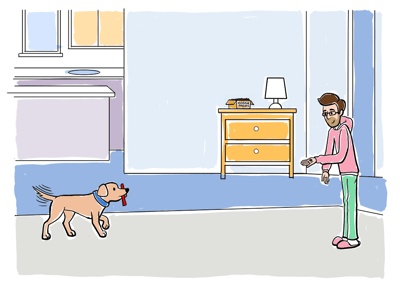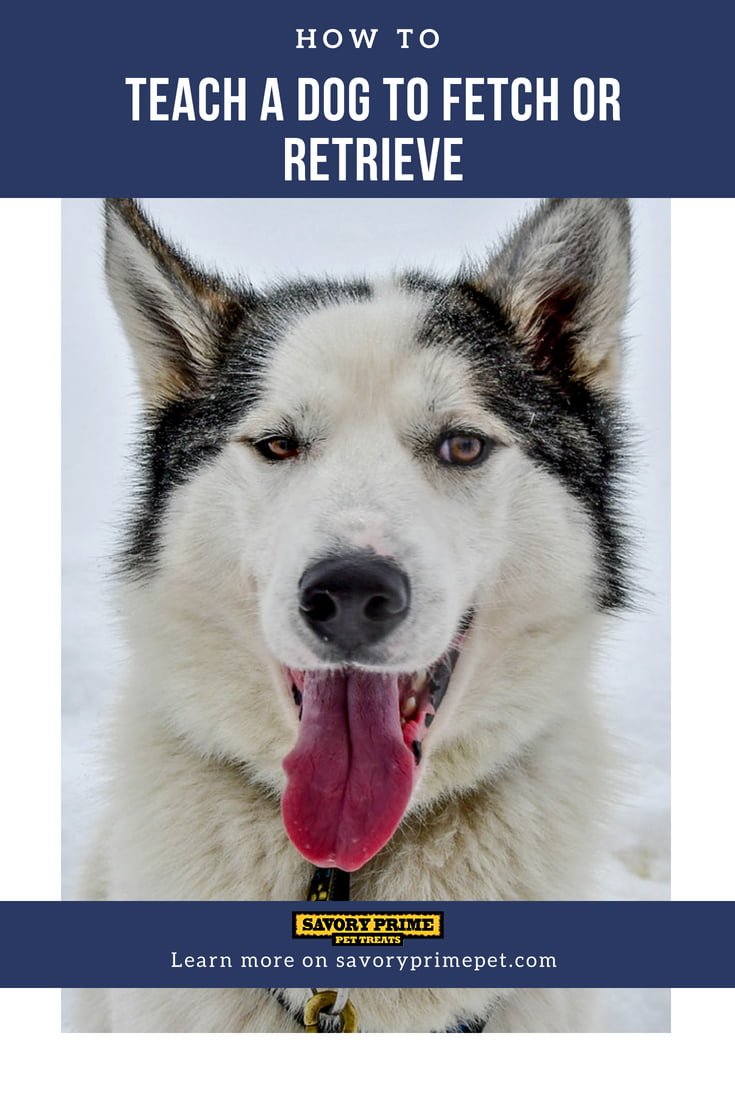Bringing a new puppy or dog into your home can be an exciting and rewarding experience. However, it's important to establish good habits and behaviors early on, including teaching your dog basic commands such as "sit," "stay," and perhaps the most iconic of all, "fetch." Fetch is not only a fun game for dogs, but it also helps with their physical and mental stimulation, obedience, and bonding with their owner. In this guide, we will cover everything you need to know about how to teach your dog to fetch, from understanding the basics to troubleshooting common challenges.
Understanding the Basics of Fetch

Before diving into the training process, it's important to understand the basics of what fetch actually entails. Fetch is a game where the dog retrieves an object that has been thrown by its owner and brings it back to them. While this may seem simple, there are a few key elements that must be in place for a successful game of fetch:
The Right Equipment
First and foremost, you will need the right equipment for fetch. This includes a suitable toy or object for your dog to retrieve, such as a ball, frisbee, or rope toy. It's important to choose a toy that your dog is comfortable with and enjoys playing with, as this will make the training process more enjoyable for both of you.
Additionally, you may want to invest in a retrieval tool, such as a Chuckit or ball launcher, to help throw the toy further and give your dog more exercise. However, these tools are not necessary and can be substituted with simply throwing the toy yourself.
Obedience Training
Before attempting to teach your dog to fetch, it's crucial to have a solid foundation of obedience training in place. Your dog should be able to follow basic commands such as "sit," "stay," and "drop it" before moving on to fetch. This will help them understand and respond to your instructions during the training process.
Bonding with Your Dog
Playing fetch is not only a physical activity for your dog, but it also helps with bonding and building trust between you and your furry friend. Take this time to interact with your dog, praise them, and show them love. The more bonded you are, the more likely they will be to listen and follow your commands during the game of fetch.
Training Your Dog to Fetch: Step by Step

Now that you understand the basics, let's dive into the step-by-step process of teaching your dog to fetch.
Step 1: Get Your Dog Interested in the Toy
The first step in teaching your dog to fetch is to get them interested in the toy. Start by letting your dog sniff and play with the toy, but don't throw it just yet. This will help them become familiar with the toy and associate it with something fun.
Once your dog is showing interest in the toy, throw it a short distance away (no more than a few feet) and encourage them to retrieve it. You can use phrases like "go get it" or "fetch" to help them understand what you want them to do.
If your dog is hesitant to go after the toy, try running alongside them or getting excited yourself to show them it's a fun game. Once they pick up the toy, make sure to praise and reward them with treats or verbal praise.
Step 2: Teach "Drop It"
After your dog has retrieved the toy, it's important to teach them to release it back to you. This is where the "drop it" command comes into play. Start by giving them the "drop it" command while gently tugging on the toy. When they release it, give them a treat as a reward.
Repeat this process a few times until your dog starts to understand the command and consistently drops the toy when instructed. This is an important step as it will prevent your dog from running off with the toy and refusing to give it back.
Step 3: Increase Distance and Introduce "Fetch"
Once your dog has mastered the first two steps, it's time to increase the distance between you and your dog. Start by throwing the toy a little further away (but not too far) and using the "fetch" command. If your dog successfully retrieves the toy and brings it back, make sure to reward and praise them.
Keep repeating this process, gradually increasing the distance between you and your dog each time. Remember to always use the same commands and stay consistent with your training.
Step 4: Incorporate Recall
Incorporating the recall command during fetch is important for maintaining control and safety. Once your dog has retrieved the toy, give them the "come" or "here" command, and when they return to you, reward and praise them. This will help reinforce their obedience and responsiveness to your commands.
Step 5: Add a Release Word
In addition to the "drop it" command, you can also introduce a release word that tells your dog it's okay to let go of the toy. This could be something like "release" or "give." Use this word every time you want your dog to let go of the toy, and make sure to reward and praise them when they do so correctly.
Step 6: Practice, Practice, Practice!
Like any new skill, teaching your dog to fetch takes practice. Continue practicing with your dog, gradually increasing the distance and adding in different challenges such as throwing the toy over obstacles or in different directions. The more you practice, the better your dog will become at fetching.
Common Challenges and How to Overcome Them

While teaching your dog to fetch may seem straightforward, there are some common challenges that you may encounter during the training process. Here are a few tips for overcoming these challenges:
Your Dog Isn't Interested in the Toy
If your dog doesn't seem interested in the toy, try using a different one or incorporating treats into the game. You can also try playing with the toy yourself to show them it's something fun.
Your Dog Won't Release the Toy
If your dog is refusing to release the toy, try trading it for a treat or another toy. This will teach them that releasing the toy leads to something positive. You can also work on strengthening their "drop it" command through consistent practice.
Your Dog is Easily Distracted
If your dog is easily distracted during fetch, try finding a quiet and enclosed area to play in. You can also use high-value treats to keep their attention and reinforce their focus on the game.
FAQs

What age should I start teaching my dog to fetch?
It's best to start teaching your dog to fetch when they are young, preferably between 4-6 months old. However, older dogs can also learn to fetch with patience and consistency.
Can any breed of dog learn to fetch?
Yes, any breed of dog can learn to fetch as long as they have the physical ability to retrieve objects. Some breeds, such as retrievers and hunting dogs, may catch on quicker due to their natural instincts.
My dog only brings the toy back partway, what should I do?
If your dog doesn't bring the toy all the way back to you, try throwing it shorter distances and gradually increasing the distance as they improve. You can also try using a longer leash to help guide them back to you.
Is there a specific time of day I should practice fetch with my dog?
No, you can practice fetch with your dog at any time of day. Just make sure they have had enough time to digest their food before engaging in any physical activity.
Can I use any type of toy for fetch?
You can use any type of safe and dog-friendly toy for fetch. However, it's important to choose a toy that your dog is comfortable with and enjoys playing with to make the training process more enjoyable for both of you.
Conclusion

Teaching your dog to fetch can be a fun and rewarding experience for both you and your furry friend. By understanding the basics, following the step-by-step process, and staying consistent with your training, you can successfully teach your dog to fetch and enjoy all of its benefits. Remember to always have patience and show your dog love and affection during the training process. Happy fetching!



